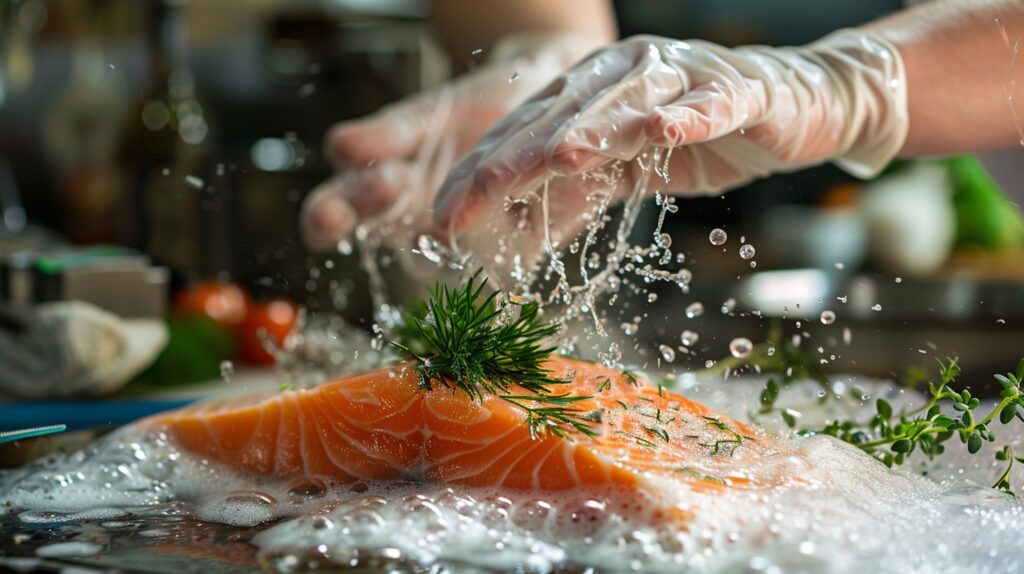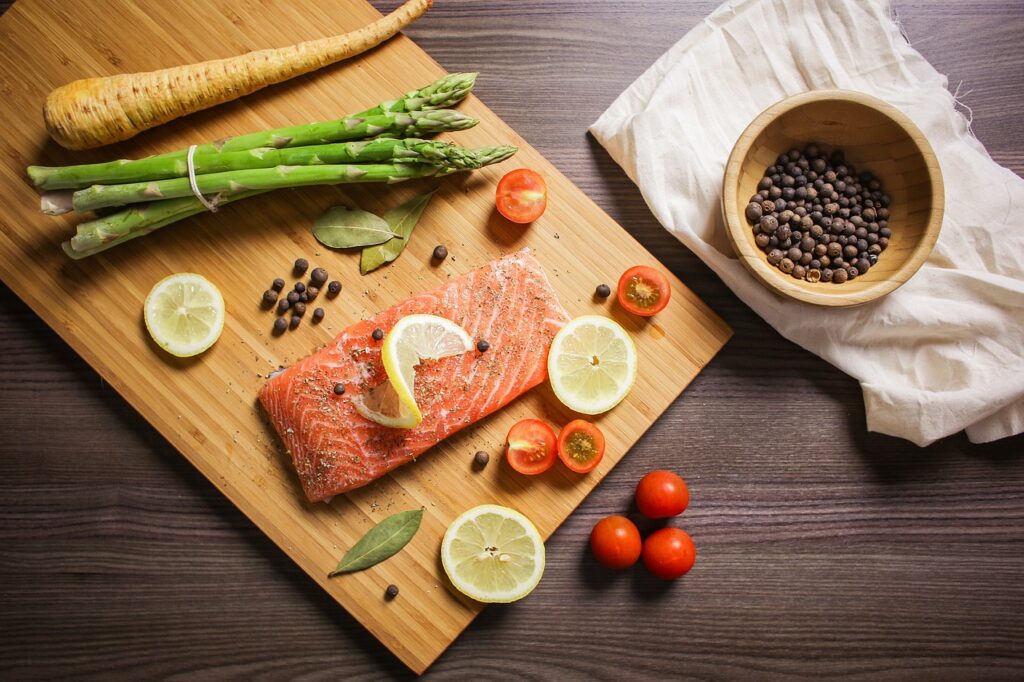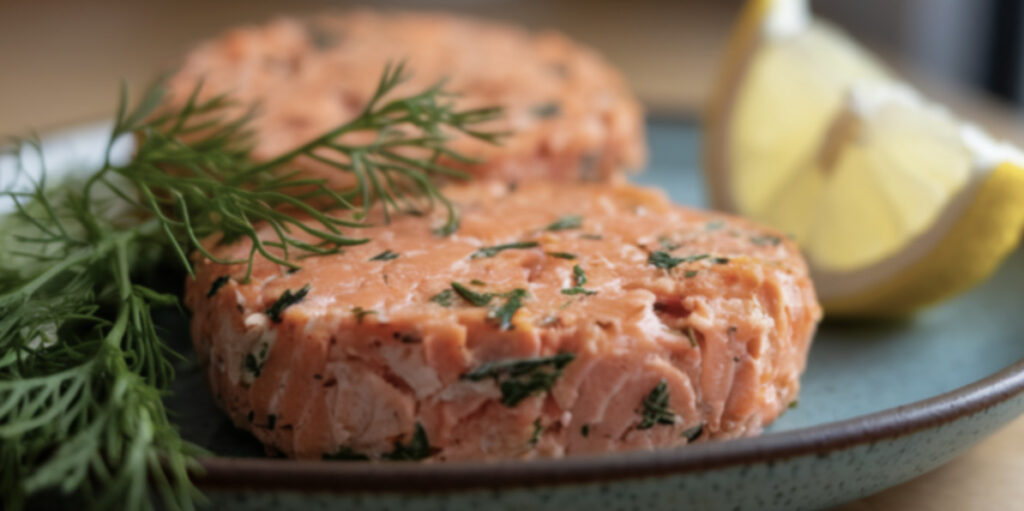Salmon patties are a timeless favorite, known for their crispy exterior and tender, flavorful center. Understanding their structure; from key ingredients to cooking techniques; is the secret to achieving perfect texture and taste every time. Whether you’re a beginner or a seasoned cook, mastering this balance will elevate your salmon patties to the next level.
Table of Contents
Understanding the Structure of Salmon Patties
Why Salmon Patties Crumble
The integrity of salmon patties lies in a delicate balance of moisture, binding agents, and cooking technique. If salmon patties crumble, it is often due to insufficient binding or an improper ratio of ingredients. Key reasons include:
- Lack of Bindings: Ingredients like eggs and breadcrumbs act as adhesives, holding the salmon mixture together. Insufficient use of these can lead to structural failure.
- Excessive Moisture: Too much liquid in the mixture, whether from salmon juice, mayonnaise, or added liquids, can cause the patties to fall apart during cooking.
- Overcooking: Extended cooking times or high heat can dry out the patties, reducing cohesion and making them prone to crumbling.
- Improper Shaping: Loosely shaped patties or those with uneven thickness may not cook evenly, leading to weak spots that break apart.
The Role of Ingredients in Maintaining Structure
Each ingredient in a salmon patty plays a specific role in ensuring its firmness and cohesion:
- Eggs: Act as the primary binder, creating a stable matrix that holds the patty together.
- Breadcrumbs, Crackers, or Flour: Absorb moisture and provide a firm texture. These dry ingredients prevent the mixture from being too wet while adding stability.
- Salmon: The main protein component must be properly flaked but not over-processed. A balance between chunks and smaller flakes contributes to the texture and integrity.
- Seasonings and Add-ins: Vegetables, herbs, and spices add flavor but should be finely chopped and used in moderation to avoid weakening the patty’s structure.
- Fat or Moisture Enhancers (e.g., mayonnaise): While adding moisture for taste, these must be carefully measured to avoid overpowering the binding agents.
- Chilling the Mixture: Before forming patties, refrigerating the mixture allows it to firm up, making it easier to shape and cook without falling apart.
Understanding the role of each component and carefully managing moisture levels ensures salmon patties maintain their structure while delivering delicious flavor.
Choosing the Right Ingredients
Types of Salmon: Fresh vs. Canned
The type of salmon used in patties significantly affects their flavor, texture, and ease of preparation. Here’s a breakdown of fresh and canned options:
- Fresh Salmon:
- Flavor: Offers a more delicate, natural taste.
- Texture: Provides a firmer, flaky texture that gives patties a more gourmet feel.
- Preparation: Requires additional steps like cooking, flaking, and deboning before mixing.
- Cost: Often more expensive, making it a choice for special occasions or premium recipes.
- Moisture Control: Easier to regulate since you can control how it’s cooked and prepared.
- Canned Salmon:
- Flavor: Offers a richer, brinier taste due to its preservation process.
- Texture: Soft and pre-flaked, making it easy to mix directly into the patty mixture.
- Preparation: Ready-to-use, requiring minimal prep time. Most canned salmon includes small, edible bones, which can be left in for added calcium or removed for texture preference.
- Cost: More affordable and widely available, making it a convenient choice for everyday cooking.
- Moisture Control: May require draining to prevent excess liquid from affecting the patty’s structure.
Binding Agents: Eggs, Breadcrumbs, and Alternatives
Binding agents are crucial for holding the salmon patty mixture together and ensuring it cooks without crumbling. Below are some commonly used binders and alternatives:
- Eggs:
- Role: Act as the primary adhesive, binding all the ingredients into a cohesive mixture.
- Quantity: Usually one egg per pound of salmon is sufficient. Overusing eggs can make the patties too dense.
- Breadcrumbs:
- Role: Absorb excess moisture and add a firm, uniform structure to the patties.
- Varieties: Regular breadcrumbs, panko (for a lighter texture), or seasoned options for added flavor.
- Gluten-Free Option: Use gluten-free breadcrumbs or alternatives for dietary restrictions.
- Alternatives to Eggs and Breadcrumbs:
- Flour or Cornmeal: Add structure while maintaining a crispy exterior when pan-fried.
- Mashed Potatoes: Provide a smooth, creamy texture and help bind ingredients naturally.
- Ground Oats: A healthy alternative to breadcrumbs, offering a mild flavor and firm structure.
- Flaxseed or Chia Seeds: When mixed with water, these seeds create a gel-like consistency, serving as a vegan-friendly binder.
Preparing Salmon for Patties

Deboning and Flaking Techniques
Proper preparation of salmon is essential for creating well-textured and flavorful patties. The steps below outline how to debone and flake salmon effectively:
- Deboning Fresh Salmon:
- Pin Bones: Use a pair of fish tweezers or clean kitchen tweezers to remove pin bones from fresh salmon fillets. Run your fingers along the fillet to locate the bones, pulling them out gently to avoid damaging the flesh.
- Skin Removal: If using skin-on fillets, slide a sharp knife between the skin and flesh, holding the skin firmly as you cut it away.
- Deboning Canned Salmon:
- Most canned salmon contains small, soft bones that are edible and high in calcium. These can be mashed into the mixture for nutritional value.
- For a smoother texture, manually remove the bones by breaking apart the salmon and picking them out.
- Flaking the Salmon:
- For fresh salmon, cook it until just done (baked, poached, or steamed) and let it cool slightly before flaking. Use a fork to gently pull the flesh apart into small, even pieces.
- With canned salmon, drain it thoroughly before flaking directly from the can, ensuring no large chunks remain.
Ensuring Moisture Balance in Salmon
Achieving the right moisture balance is critical for patties that are tender yet hold their shape. Here’s how to control moisture effectively:
- Draining Excess Liquids:
- For canned salmon, drain the liquid thoroughly using a fine mesh strainer or pressing lightly with a spoon.
- If using freshly cooked salmon, pat it dry with a paper towel before flaking.
- Adding Moisture Wisely:
- Moisture-enhancing ingredients like mayonnaise, yogurt, or finely chopped onions can improve the texture but should be used sparingly to avoid making the mixture too wet.
- For added flavor and moisture, incorporate grated vegetables like zucchini or carrots, but ensure they are squeezed to remove excess liquid.
- Absorbing Excess Moisture:
- Include dry ingredients like breadcrumbs, crushed crackers, or ground oats to absorb any excess moisture. Adjust the quantity based on the salmon mixture’s consistency.
- If the mixture feels too wet after combining, let it rest in the refrigerator for 15–30 minutes. Chilling helps the ingredients bind together and firms up the texture, making shaping easier.
By carefully deboning, flaking, and managing moisture levels, you’ll create salmon patties with the ideal balance of texture and flavor, ensuring they hold together during cooking.
Mixing Ingredients Correctly
Importance of Even Distribution

Proper mixing ensures all ingredients are evenly distributed, resulting in flavorful and well-structured salmon patties. Here’s why even distribution matters:
Balanced Flavor: Ensures every bite contains the right blend of seasonings, herbs, and salmon.
Consistent Texture: Prevents clumps of any single ingredient, creating a smooth, uniform patty.
Improved Binding: Helps binding agents like eggs and breadcrumbs mix thoroughly with the salmon, reducing the risk of crumbling during cooking.
How to Achieve Even Distribution:
Use a large mixing bowl to allow enough room for thorough combining.
Add ingredients in stages, starting with the salmon and binding agents before incorporating seasonings and add-ins like vegetables or herbs.
Mix gently with a fork or your hands to ensure the ingredients are blended without over-processing.
Tips for Avoiding Overmixing
Overmixing the salmon mixture can negatively affect the texture and structure of your patties. Here are some key tips to avoid this common mistake:
Use a Gentle Touch:
Mix just until the ingredients are combined. Overworking the mixture can break down the salmon into a paste, resulting in dense, gummy patties.
Fold, Don’t Mash:
Instead of mashing or stirring vigorously, use a folding motion to combine the ingredients. This technique preserves the salmon’s flaky texture.
Control Moisture First:
Ensure the salmon is properly drained and that the moisture content is balanced before mixing. This reduces the need for excessive mixing to adjust the consistency.
Rest the Mixture:
After mixing, let the mixture rest in the refrigerator for 15–30 minutes. This helps the ingredients bind naturally, minimizing the need for additional mixing before shaping.
By focusing on even distribution and mindful mixing techniques, you can create salmon patties that are perfectly cohesive while maintaining a tender, flaky texture.
The Role of Binding Agents in Cooking
How Eggs and Starches Hold Patties Together
Binding agents play a crucial role in the structural integrity of salmon patties. They create a cohesive mixture that holds up during shaping and cooking:
- Eggs:
- Eggs act as a natural adhesive, binding the salmon and other ingredients together. The protein in eggs coagulates when heated, solidifying the patty and preventing it from falling apart.
- Typically, one egg per pound of salmon is sufficient to achieve a stable mixture.
- Starches:
- Ingredients like breadcrumbs, flour, or cornmeal absorb excess moisture and provide structure. Starches help create a firm texture, ensuring the patties are not too wet or fragile.
- Gluten-free options like ground oats or almond flour can be used for dietary preferences.
Substitutes for Common Allergies
For individuals with egg or gluten allergies, alternative binding agents can be used without compromising the structure of the patties:
- Egg Substitutes:
- Flaxseed or Chia Seed Gel: Mix 1 tablespoon of ground flaxseed or chia seeds with 2.5 tablespoons of water and let it sit until it forms a gel.
- Mashed Banana or Applesauce: Use about ¼ cup as a substitute for one egg, adding a subtle sweetness.
- Silken Tofu: Blend ¼ cup silken tofu for a creamy, neutral-flavored binder.
- Gluten-Free Starches:
- Use almond flour, coconut flour, or gluten-free breadcrumbs to replace traditional breadcrumbs.
- Crushed rice crackers or cornmeal can add a similar texture and absorbency.
The Right Consistency for Salmon Mixture
Testing the Mixture’s Texture
Achieving the right consistency is essential for forming patties that hold together but remain tender. Here’s how to test the texture:
- Touch Test:
- The mixture should feel slightly sticky but not overly wet. If it sticks excessively to your hands, it’s too moist.
- Shape Test:
- Scoop a small portion and form it into a patty. If it holds its shape without crumbling or flattening out, the consistency is correct.
Adjusting Ingredients for Better Consistency
- If Too Wet:
- Add more breadcrumbs, crushed crackers, or ground oats gradually until the mixture firms up.
- Avoid adding too much at once to maintain the desired texture.
- If Too Dry:
- Mix in a small amount of mayonnaise, yogurt, or an extra egg to restore moisture.
- Grated vegetables like zucchini or carrots (squeezed to remove excess liquid) can also help.
Shaping Salmon Patties
Techniques for Forming Uniform Patties
- Portion Evenly:
- Use a measuring cup or ice cream scoop to ensure each patty is the same size, promoting even cooking.
- Use Wet Hands:
- Lightly dampen your hands with water or oil to prevent the mixture from sticking while shaping.
- Flatten Gently:
- Form balls and flatten them into discs about ¾ to 1 inch thick for even cooking and better structural stability.
Common Mistakes to Avoid
- Over-Compacting:
- Pressing too hard while shaping can result in dense, tough patties. Use a light touch to keep the texture tender.
- Inconsistent Sizes:
- Different-sized patties cook at different rates, leading to uneven results.
- Skipping Chill Time:
- Shaping and cooking immediately can cause the patties to fall apart. Refrigeration helps them firm up.
Refrigerating Before Cooking
How Chilling Improves Structural Integrity

Refrigeration helps stabilize the patties by allowing the binding agents to firm up. This step reduces the likelihood of crumbling during cooking:
- Firming the Mixture:
- Chilling solidifies the fat content and allows the ingredients to bond more effectively, making the patties easier to handle.
- Improved Shape Retention:
- Cold patties maintain their form better when placed in a hot pan, reducing spreading or breaking.
Ideal Duration for Refrigeration
- Minimum Time:
- Chill the patties for at least 15–30 minutes to let the ingredients set.
- Overnight Option:
- For advanced preparation, patties can be refrigerated overnight, covered tightly, to save time and enhance flavor infusion.
By understanding these techniques and principles, you can create salmon patties with perfect flavor, texture, and structural integrity.
Choosing the Right Cooking Method
Pan-Frying vs. Baking vs. Grilling
Pan-Frying: This method creates a crispy, golden crust and is perfect for small batches. It requires a little oil and medium heat for even cooking.
Baking: A healthier, hands-off method that evenly cooks the patties. It’s ideal for larger batches and requires minimal oil.
Grilling: Adds a smoky flavor and crisp exterior. Best suited for sturdier patties, as the mixture needs to hold up on the grill grates.
Tips for Each Cooking Method
Pan-Frying: Use a non-stick or well-seasoned skillet. Avoid overcrowding to maintain crisp edges.
Baking: Preheat the oven to 375°F (190°C). Place patties on a parchment-lined baking sheet for easy cleanup.
Grilling: Oil the grates well and preheat to medium. Use a spatula to flip gently to prevent sticking.
Using the Right Cooking Temperature
Importance of Moderate Heat
Moderate heat ensures the patties cook evenly, preventing the exterior from burning before the interior is done. This balance maintains texture and flavor.
Avoiding Undercooking or Overcooking
Undercooking: Leads to mushy patties and potential food safety risks. Ensure an internal temperature of 145°F (63°C) for salmon.
Overcooking: Dries out the patties, making them crumbly and tough. Remove from heat as soon as they are golden brown and cooked through.
Frequently Asked Questions
1. How do I keep my salmon patties from falling apart?
To keep your salmon patties intact, use a binding agent like breadcrumbs, eggs, or mashed potatoes. Properly chilling the mixture before frying can also help them hold their shape.
2. Can I use canned salmon instead of fresh?
Yes, canned salmon is a convenient and flavorful alternative to fresh salmon. Just ensure you drain it well and remove any skin or bones for a smoother texture.
3. What oil is best for frying salmon patties?
Neutral oils like canola, vegetable, or avocado oil work well for frying. They provide a crisp outer layer without overpowering the salmon’s flavor.
4. How do I know when the patties are done?
Salmon patties are done when they are golden brown on both sides and have an internal temperature of 145°F (63°C). This usually takes about 3–4 minutes per side over medium heat.
5. Can I bake salmon patties instead of frying?
Yes, you can bake them for a healthier option. Place the patties on a parchment-lined baking sheet and bake at 375°F (190°C) for 15–20 minutes, flipping halfway through.
6. What are some good sides to serve with salmon patties?
Salmon patties pair well with sides like coleslaw, steamed vegetables, roasted potatoes, or a fresh green salad. A tangy dipping sauce like tartar or lemon dill also complements them beautifully.
Conclusion
Cooking salmon patties is simple and rewarding when you follow best practices like using a reliable binding agent, selecting the right cooking method, and pairing them with delicious sides. Whether you fry or bake, these patties are a versatile addition to any meal.
Don’t hesitate to try these methods in your kitchen. With a little practice, you’ll create salmon patties that are crispy on the outside, tender on the inside, and full of flavor. Enjoy experimenting with spices and accompaniments to make them your own!

